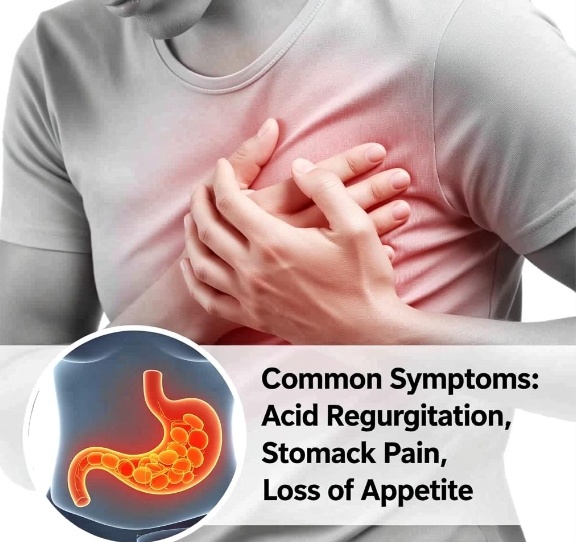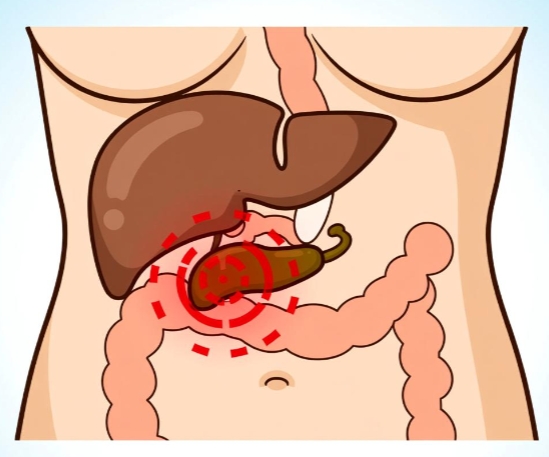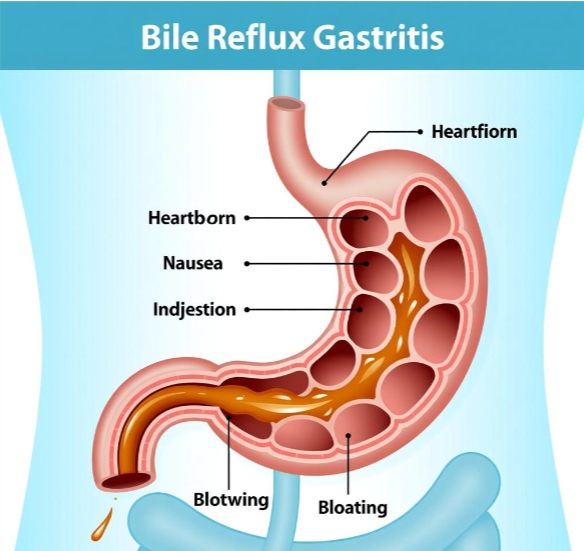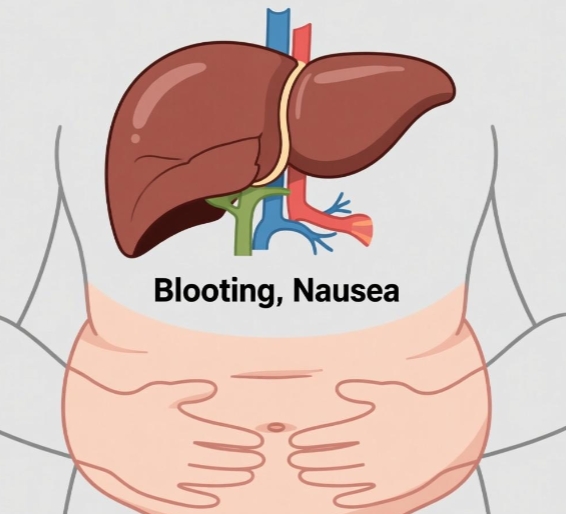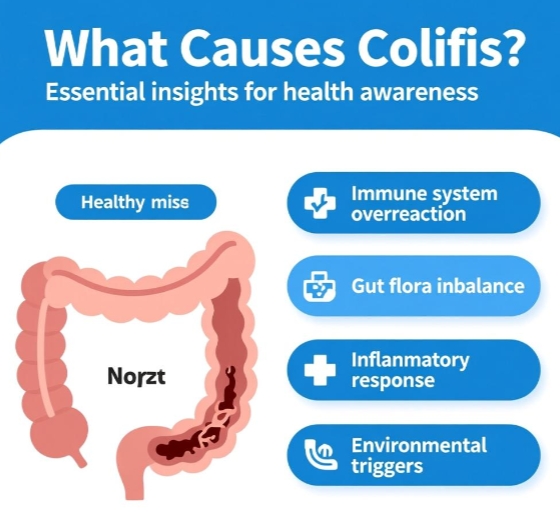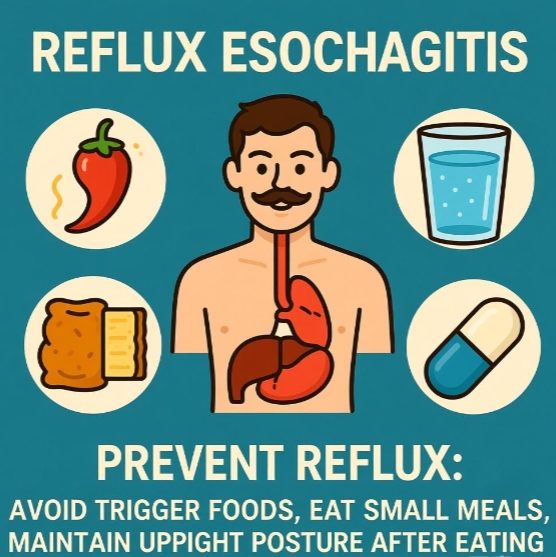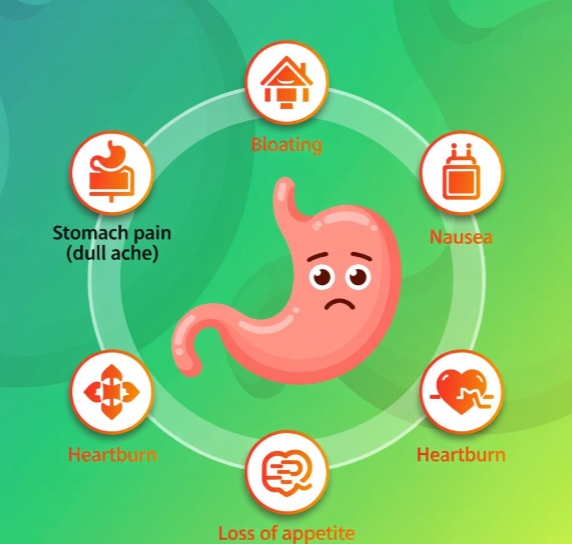Bile reflux gastritis is a common form of chronic gastritis caused by the abnormal backflow of duodenal contents—especially bile—into the stomach, leading to mucosal inflammation and a range of upper-gastrointestinal complaints. The condition can markedly impair quality of life, and symptoms often overlap with those of acid-peptic disorders, making recognition important.
- Typical symptoms
- Epigastric burning or dull pain: usually steady, more intense when the stomach is empty or at night, and frequently exacerbated after fatty meals.
- Nausea and bilious vomiting: vomitus is yellow-green, bitter-tasting and may contain food residue; attacks are common in the evening or around midnight.
- Post-prandial fullness and early satiety: patients feel bloated soon after starting a meal, leading to reduced food intake.
- Regurgitation and heart-burn: a sour or bitter fluid rises into the throat, sometimes accompanied by a retrosternal burning sensation.
- Belching and excessive flatus: frequent belching does not relieve the discomfort and nocturnal flatulence is often reported.
- Atypical or accompanying symptoms
- Chest pain: a deep-seated discomfort behind the sternum that may radiate to the back, neck or jaw, occasionally misinterpreted as cardiac pain.
- Chronic cough, hoarseness or oropharyngeal burning: caused by duodeno-gastro-oesophageal reflux reaching the larynx and airways.
- Anorexia and modest weight loss: persistent nausea and fear of post-meal pain discourage adequate eating.
- Fatigue and even anaemia: long-standing mucosal erosion can produce occult bleeding, ultimately leading to iron-deficiency anaemia.
- Alarm features (prompt urgent evaluation)
Repeated haematemesis, melena, dysphagia, progressive unintentional weight loss, or anaemia suggest complications such as erosive oesophagitis, gastric ulcer or Barrett’s mucosa and require immediate endoscopy.
Symptom summary table
| Category | Common manifestations | Timing / triggers | Clinical hints |
|---|---|---|---|
| Pain | Epigastric burning, dull ache | Empty stomach, night, high-fat meals | Relieved slightly by sitting up |
| Nausea & vomiting | Bilious vomitus, bitter taste | Evening, after overeating | Vomit is yellow-green, non-acidic |
| Dyspepsia | Fullness, early satiety, belching | During or right after meals | May mimic functional dyspepsia |
| Reflux | Heart-burn, regurgitation, chest pain | Supine position, bending | Distinguish from acid reflux |
| Systemic | Anorexia, weight loss, fatigue | Chronic course | Suggest mucosal damage ± bleeding |
